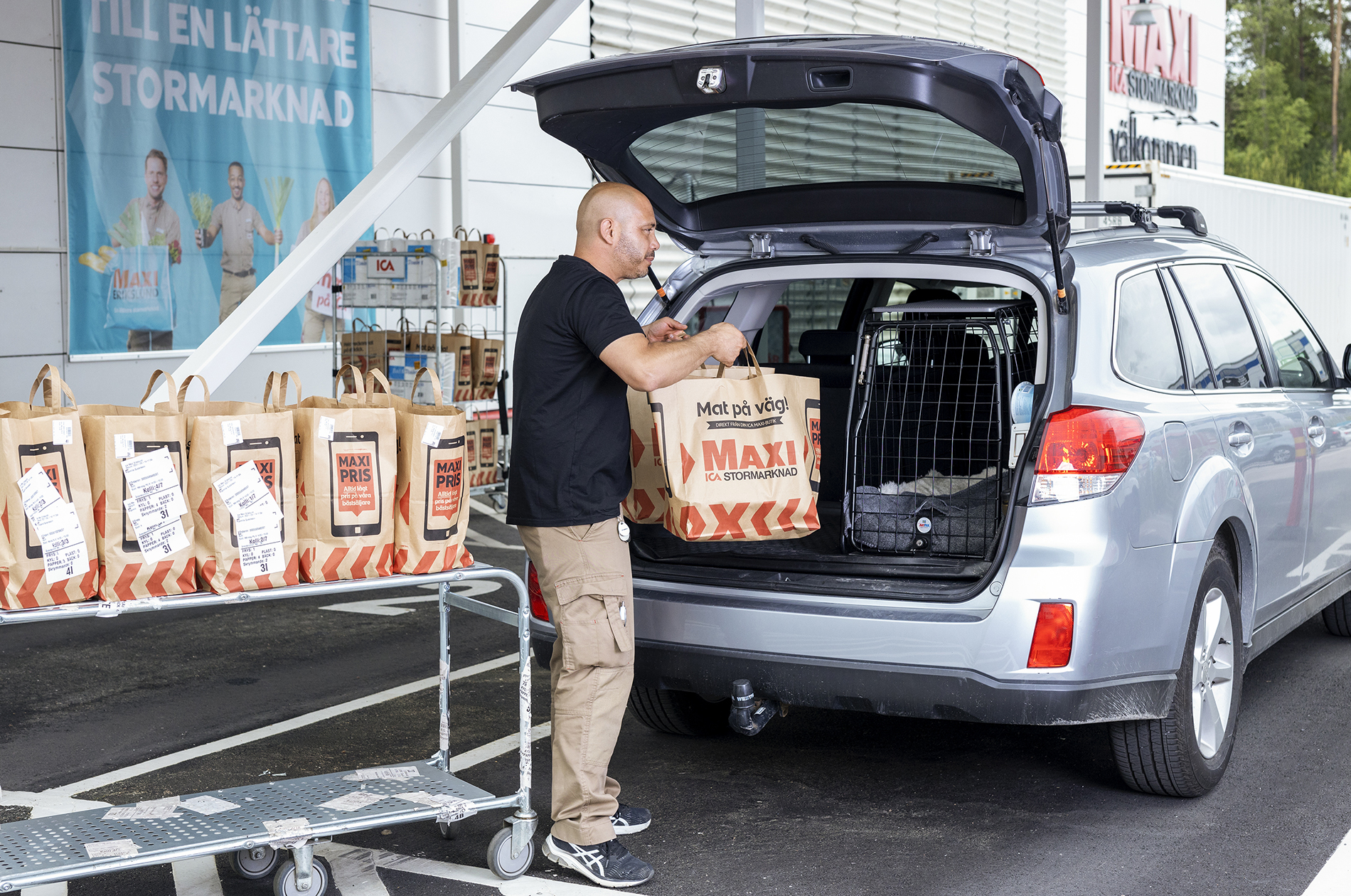
Bringing essential groceries within everyone’s reach
In the suburbs of Oslo, a red trailer branded with the logo of the Norwegian grocery retailer MENY is using technology that’s helping to reshape retail around the world.
Sat at the side of a petrol station, the trailer is accessed by a ramp that leads into what looks like a miniature gymnasium locker room. Numbered doors cover electronically fastened compartments on either side of the interior. Within them are bags of groceries kept chilled, frozen or at a constant room-temperature, awaiting collection by customers who have ordered them online.
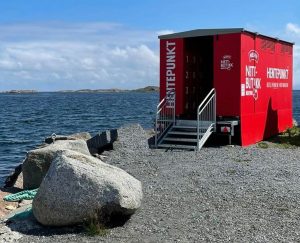
At any time of the day or night you can see people drive up, many on the way back from work, park their car and enter the trailer. A code sent to their smartphones opens the locker doors and the visitors leave moments later laden with their groceries.
This is mobile-locker click-and-collect, the latest and most public deployment of retail technology company StrongPoint’s grocery e-commerce offering. The grocery locker is filled by supermarket staff who work with StrongPoint’s Microsoft Azure-hosted grocery e-commerce platform and software. In conjunction with cloud DevOps applications such as Visual Studio and Xamarin.iOS, StrongPoint is slashing time and expense from the costly business of providing fast and convenient grocery deliveries online.
The Oslo-headquartered company was formed in the 1980s and now provides solutions across Europe and the U.S. Its e-commerce division is largely based in Sweden and was one of the first companies in the world to provide grocery retailers with the technology infrastructure for online orders in the late 1990s.
From its beginnings as a digital grocery management solution, the hardware and software products provide the iron link between shoppers and the huge logistics chain that ensures they get their groceries from the world’s farms and food manufacturers. Within that vast array of interconnected service providers are the stores that put customers’ groceries on shelves, the registers that process their payments, the pickers-and-packers who fill grocery delivery bags and the workers who fulfil the difficult last-mile demands of delivering to collection lockers or front doors.
“From the moment you click on your order to the moment it goes into the delivery box or until it gets to the end customers, StrongPoint provides an end-to-end digital infrastructure for grocery retailers so they can manage online orders at speed and at scale in the most efficient, cost-effective method possible,” explains Chief Executive and Norwegian-native Jacob Tveraabak.
Pickup is the new home delivery in the e-grocery world
Click-and-collect, also known as curbside collection or buy online pick up in store, has long been available to e-commerce customers, but has become more popular during the COVID-19 pandemic.
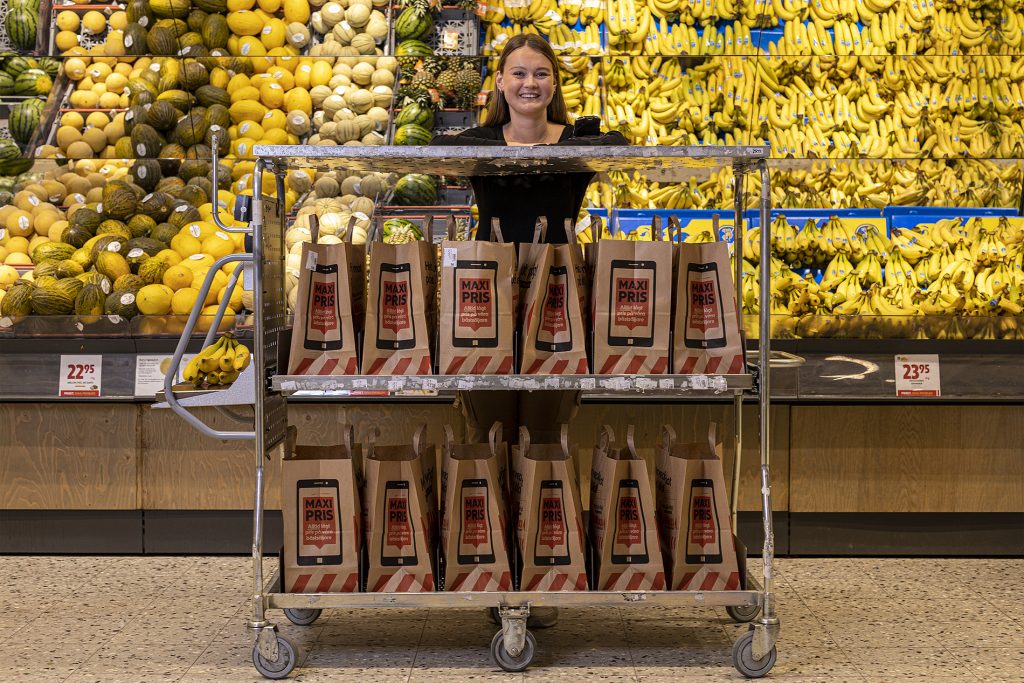
But temperature-controlled lockers that can store everything from frozen to chilled and shelf-stable goods offer a far quicker and more convenient proposition for both shop owners and shoppers in urban or rural settings.
For stores, they free up space and are quicker to fill – it usually takes under two minutes to load a customer’s order – which makes for a better customer experience, requiring fewer operatives than it takes to hand over bags or fill the trunks of cars at curbside settings.
Fast-tracked development
The pandemic has accelerated consumer appetite for fast, touchless grocery delivery or collection. According to the managing consulting firm Bain, its impact has fast-tracked development of online ordering by five years in some markets. The driver behind this has been demand for safe, healthy ways of getting groceries into peoples’ homes. In Sweden, the absolute number of click and collect orders overtook home deliveries in November 2020, according to a national retail organization that tracks the data month-by-month.
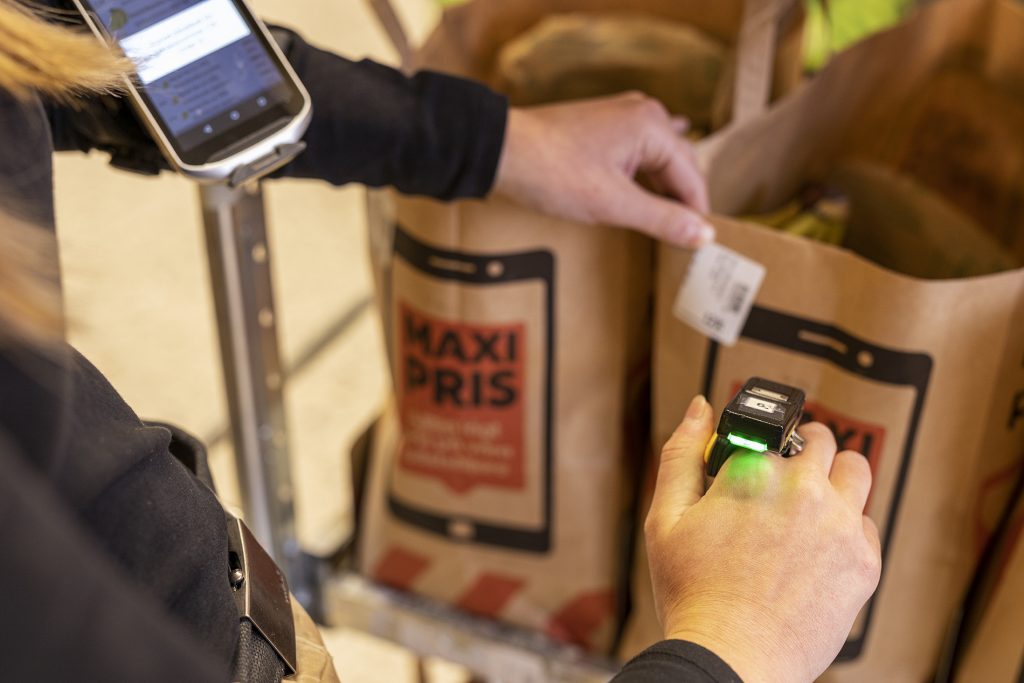
Cloud based and scalable, StrongPoints technology has increased the number of customers able to get their groceries.
Lockers are seen as safer. StrongPoint’s have received certification by the U.S.-based National Sanitation Foundation (NSF) for their ability to hold groceries according to the highest health and hygiene standards, following extensive testing of their hardware. Another key value is lockers can be placed almost anywhere, so any grocery shop, big or small, urban or rural, can make use of them to provide an easy, fast and safe way of doing online shopping.
“Outside is the new inside is what we say in the industry now and grocery retailers need to find a way that enables them to serve their online customers outside but also that enables them to leverage all their stores no matter where they are or their size,” says Tveraabak. “One of their chief concerns besides the financials is food safety, which is where having more than 35 years of working in grocery retail gives us an edge.”
Helping grocery retailers thrive in an online world and leverage their store network
At the ICA Maxi superstore in Södertälje, about 18 miles southwest of downtown Stockholm, staff go about picking and packing goods for click-and-collect pickup via a grocery locker or home delivery.
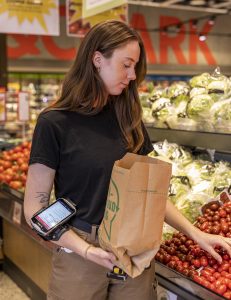
Rigged with high-tech ring scanners and personal digital assistants on their forearms – and even smaller ones on their hands – the workers move about the space in a calm, business-like manner. The devices network the staff into StrongPoint’s digital platform.
In this system of “augmented fulfilment” workers use advanced technology to integrate into the management system, which sends signals directing them to the right shelf and item in the most efficient way.
“What we are doing is adding a layer of technology to help make the pickers job easier and less stressful,” says Tveraabak.
StrongPoint analyses data generated by everything from product location and picker position to shop-flow patterns and distance from required items. From that, it offers directional prompts to optimize the way staff locate, identify and pack ordered products.
In larger stores, products are arranged thematically in zones where packers are dedicated to fulfilling certain parts of orders – say, the frozen or chilled items – before passing bags onto the next zone.
Tests of the StrongPoint system have revealed some startling productivity statistics. Many stores using the full suite of hardware and software options are achieving picking productivity rates of around 240 items per labor hour across all product categories. The industry average is between 60-90, using traditional processes.
By constantly refining the system through workflow and other forms of analysis, the system operates at a 99.9% accuracy level making it on par with many automated tools.
“What is positive about StrongPoint’s order picking is that it’s easy to learn and easy to teach new employees how it works,” says Luciano Cau, Södertälje’s ICA Maxi store manager. “Our employees’ wellbeing has increased a lot – they are not as stressed anymore.”
Efficiencies have not been made at the expense of worker health and wellness. Business at the Södertälje superstore progresses at what Tveraabak calls a comfortable pace.
“We help staff work better, not faster,” says Tveraabak. “We use the power of technology to augment the power of pickers to make them more productive.”
The system requires little training and anecdotal evidence shows that workers report far fewer incidences of stress.
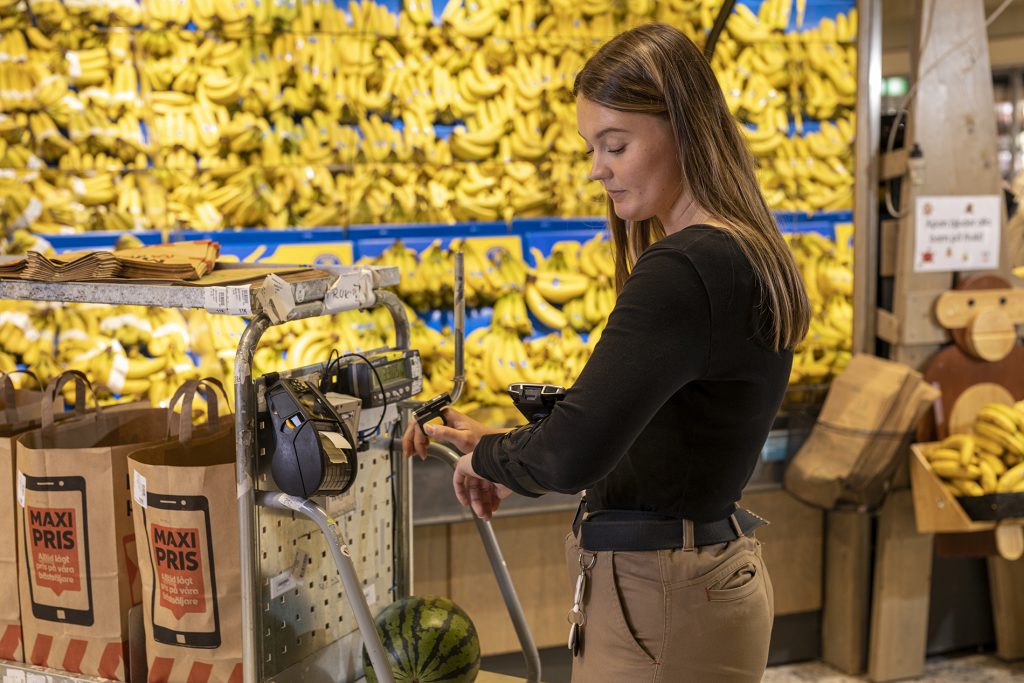
“This is a really great system to work with,” says picker Patrik at the Södertälje store. “It’s easy to handle and pretty quick to learn. Once you get used to it then it will automatically flow, and you can pick up your speed.”
Patrik’s colleague Cecelia agrees.
“It beeps if I put the wrong products in the wrong bag,” she laughs.
Here to stay
At the MENY trailer outside Oslo, grocery bags packed by workers like Cecelia and Patrik are collected by consumers who, if predictions prove correct, will be using such services even after the pandemic ends.
Online shopping is here to stay, according to a survey by UBS in the UK, which found that 71% of respondents said they’d shop digitally “as often or more after the COVID-19 situation improves.”
“The pandemic changed many conditions for operating for grocery retailers, and in essence put new imperatives on the sector that many certainly didn’t see coming,” says Nina Lund, Microsoft’s EMEA lead for retail and consumer goods. “In Europe generally speaking, our grocery sector is extremely sophisticated when it comes to responding to shopper behaviors and needs.”
But when the pandemic changed those behaviors and needs overnight, Lund says new services and demands were put on the grocery shop, which found itself (together with pharmacies) at the heart of the individual community.
“Grocery retailers needed to be able to quickly predict spikes in demand, as well as offer new delivery services and formats to those who were unable to leave their homes,” Lund says.
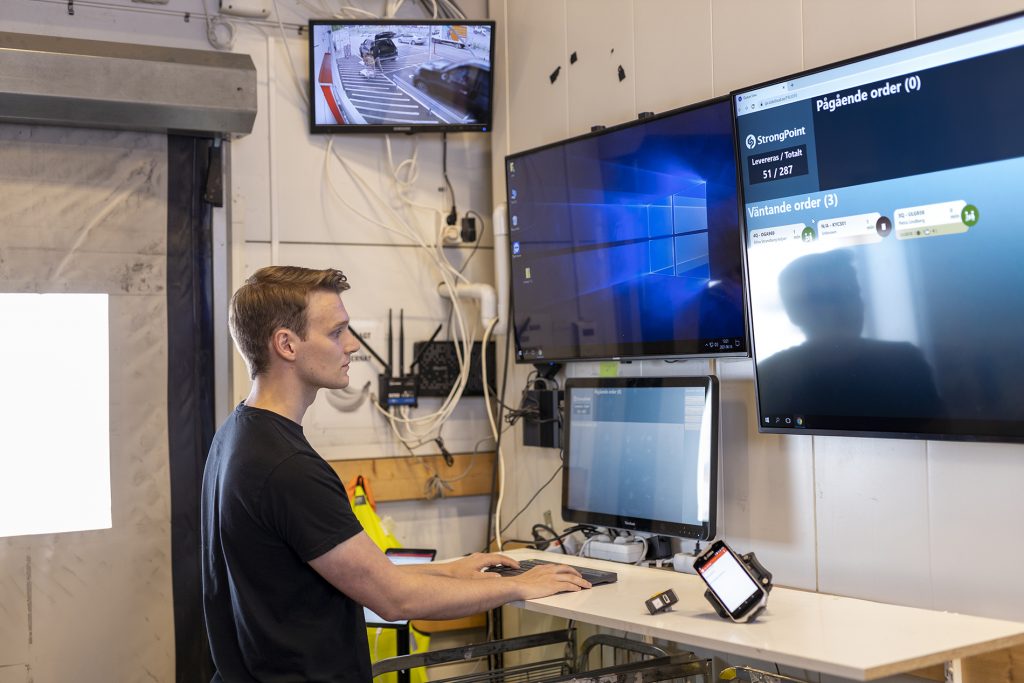
Nevertheless, reports show almost two-thirds of groceries sold in the U.S. will still be bought in-store even by 2024. Which means stores will need to reconfigure to accommodate both digital and in-person sales – a prospect StrongPoint has built into its system by allowing grocery retailers to leverage their store network to fulfill online orders.
“When you hear the words technology and groceries, they automatically think it’s about replacing people with robots,” says Tveraabak. “But it’s not a binary choice between fully manual picking and a robot picking. There is a middle new third option that is about leveraging the power of technology to augment the productivity potential of store workers and this is often a compliment, not a competitor to automated solutions.”
Thus, it’s crucial, argues Tveraabak, that grocery retailers ensure they are getting the most out of the method through which most online orders are now being processed.
“During the start of the COVID crisis, when online delivery orders surged, the fully automated fulfilment systems couldn’t scale to keep up with demand as they have a natural limit of capacity,” he says. “To keep up with demand it was humans, not robots, who came to the rescue as grocery retailers were hiring tens of thousands of additional staff to pick and pack online orders.”
Helping to keep a vital lifeline open and sustainable
“Grocery retailers are under unprecedented financial strain,” says Tverabaak. “They are facing a double squeeze of an increase of online demand which is complicated and can be expensive to manage and a decrease in foot traffic in their stores because they’ve become online customers. We believe that technology is the key to making everything more efficient from in-store to online. And by this we can help to keep managing a network of stores financially viable.”.
The grocery lockers are also taking that combination of automation and human agility to meet one of the most challenging of retail demands – providing online grocery solutions to remote places or smaller stores where home delivery isn’t viable.
In essence, StrongPoint provides digital solutions and an e-commerce platform that has seen the future of providing a vital service to potentially every consumer in the world, says Tveraabak.
“Home deliveries are what everyone thinks of in this sector, but in reality, it’s click and collect that has seen the biggest growth and is now in absolute numbers sometimes the bigger market,” Tveraabak he says. StrongPoint’s solutions “can extend the reach of online groceries to pretty much anywhere.”
Top photo: Store associate loading a drive-thru customers’ car with their order.

